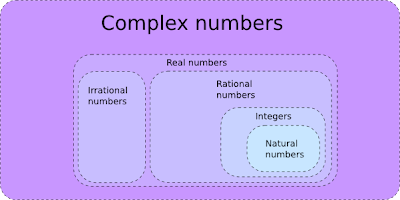Introduction of semicircle learning :
Semicircle is defined as half of a circle. That is, the angle is 180 degree arc of a circle. A triangle decorated in a semicircle is always called a right triangle.
If two curves or arcs are equal, then both the segments and sectors are similar. This each part of term is called as semicircle region.
Formulas of Semicircle Learning
A semicircle is the area enclosed by a diameter and an arc of the circle joining its two ends. The length of the resulting segment is called the geometric mean, which can be proved using the concept of Pythagorean Theorem.
Formulas:
Area of semicircle (A) =circle /2
A = (pr2)/2
Circumference of semicircle(C) = (2pr)/2
C = pr
A circumference of a semicircle is calculated for the circumference of circle divided by 2.we get,
C = 2pr ==> C/2 = pr
p = 3.14 ( approximately )
A perimeter of a semicircle is the sum of circumference and diameter of a semicircle. We get,
P = pr + 2r = r (p+2)
P = 5.14 r
Between, if you have problem on these topics math equation solver free, please browse expert math related websites for more help on how to solve a math word problem.
Examples of Semicircle Learning:
Semicircle learning Ex 1!:
Find the area of semicircle with radius of 12.5 cm.
Semicircle learning sol :
We can find the area of semicircle by using the following formula,
Area = (pr2)/2
Substitute the values of p and the radius into the above formula. Then we get,
= (3.14*(12.5)2)/2
Squaring the values of radius and multiplying with 3.14 then dividing by the value of 2.
= (3.14*156.25)/2
= (490.625)/2
Then we get the final answer.
=245.3 cm2
Answer: 245.3 cm2
Semicircle learning Ex 2:
Find the perimeter of semicircle with the radius 10 cm.
Semicircle learning sol :
We can find the perimeter of semicircle by using the following formula,
Perimeter = 5.14*r
Substitute the value of r into the above formula,
=5.14*10
=51.4 cm
Answer: 51.4 cm
Semicircle learning Ex 3:
Find the circumference of semicircle with the radius of 7.5 cm.
Semicircle learning sol :
We can find the circumference of semicircle by using the following formula,
Circumference C = (2pr)/2
Circumference C = pr
Substitute the value of p and the radius.
C = 3.14*7.5
C = 23.55 cm2
Answer: C = 23.55 cm2
Semicircle is defined as half of a circle. That is, the angle is 180 degree arc of a circle. A triangle decorated in a semicircle is always called a right triangle.
If two curves or arcs are equal, then both the segments and sectors are similar. This each part of term is called as semicircle region.
Formulas of Semicircle Learning
A semicircle is the area enclosed by a diameter and an arc of the circle joining its two ends. The length of the resulting segment is called the geometric mean, which can be proved using the concept of Pythagorean Theorem.
Formulas:
Area of semicircle (A) =circle /2
A = (pr2)/2
Circumference of semicircle(C) = (2pr)/2
C = pr
A circumference of a semicircle is calculated for the circumference of circle divided by 2.we get,
C = 2pr ==> C/2 = pr
p = 3.14 ( approximately )
A perimeter of a semicircle is the sum of circumference and diameter of a semicircle. We get,
P = pr + 2r = r (p+2)
P = 5.14 r
Between, if you have problem on these topics math equation solver free, please browse expert math related websites for more help on how to solve a math word problem.
Examples of Semicircle Learning:
Semicircle learning Ex 1!:
Find the area of semicircle with radius of 12.5 cm.
Semicircle learning sol :
We can find the area of semicircle by using the following formula,
Area = (pr2)/2
Substitute the values of p and the radius into the above formula. Then we get,
= (3.14*(12.5)2)/2
Squaring the values of radius and multiplying with 3.14 then dividing by the value of 2.
= (3.14*156.25)/2
= (490.625)/2
Then we get the final answer.
=245.3 cm2
Answer: 245.3 cm2
Semicircle learning Ex 2:
Find the perimeter of semicircle with the radius 10 cm.
Semicircle learning sol :
We can find the perimeter of semicircle by using the following formula,
Perimeter = 5.14*r
Substitute the value of r into the above formula,
=5.14*10
=51.4 cm
Answer: 51.4 cm
Semicircle learning Ex 3:
Find the circumference of semicircle with the radius of 7.5 cm.
Semicircle learning sol :
We can find the circumference of semicircle by using the following formula,
Circumference C = (2pr)/2
Circumference C = pr
Substitute the value of p and the radius.
C = 3.14*7.5
C = 23.55 cm2
Answer: C = 23.55 cm2






